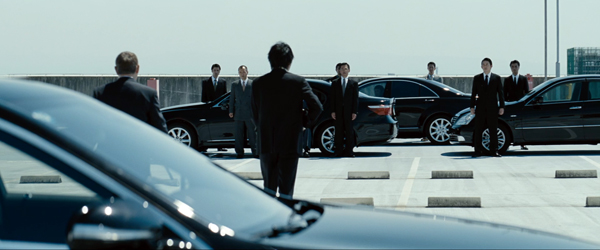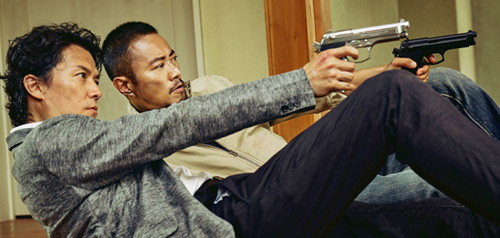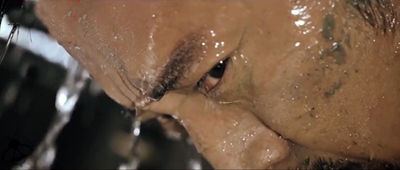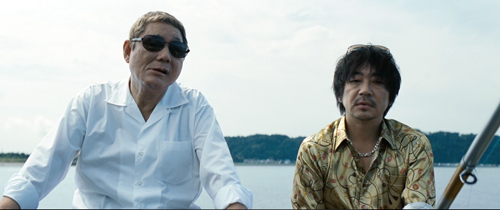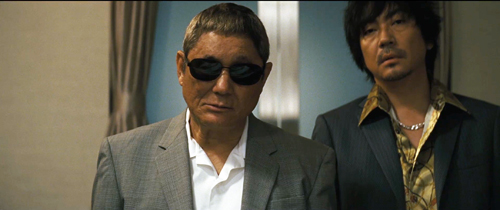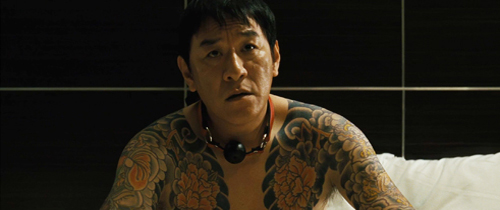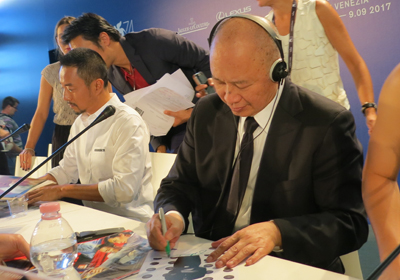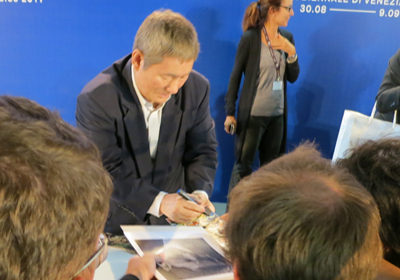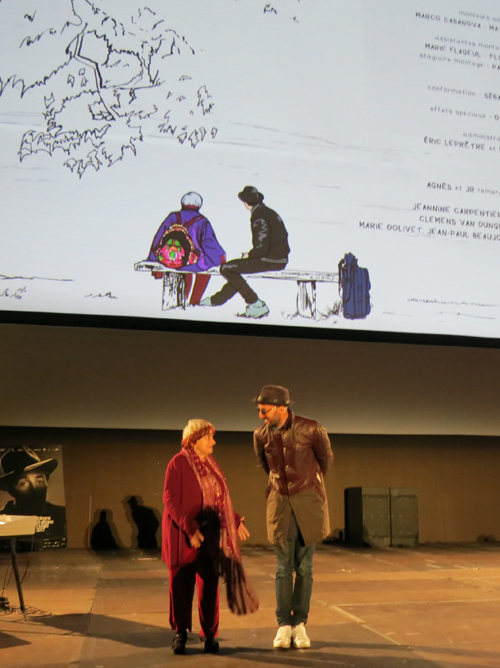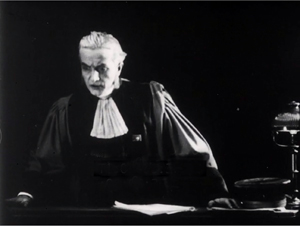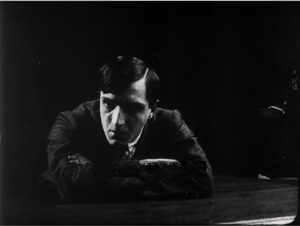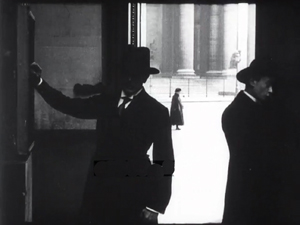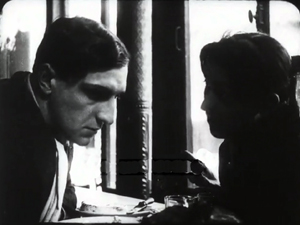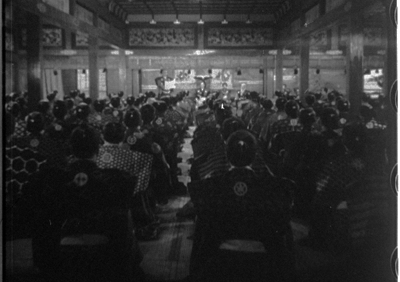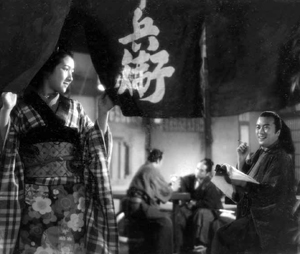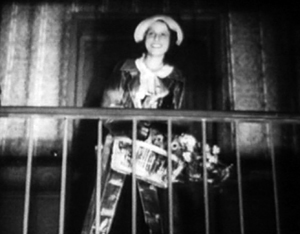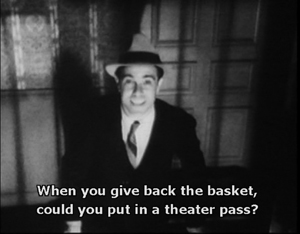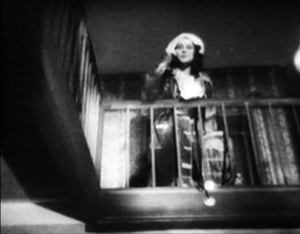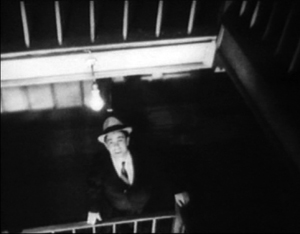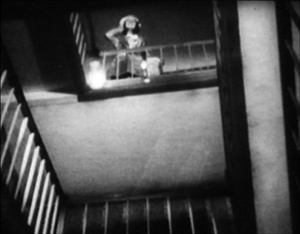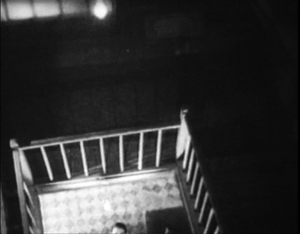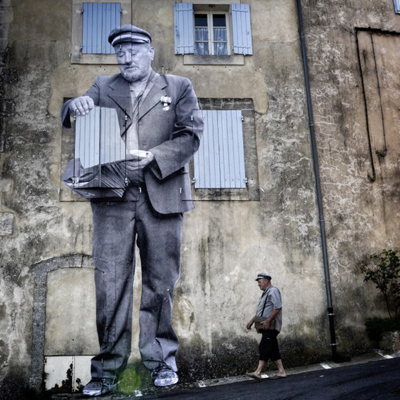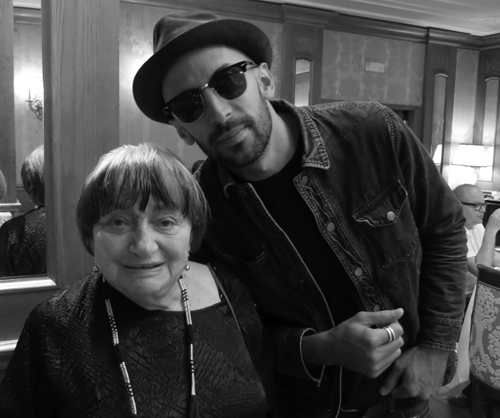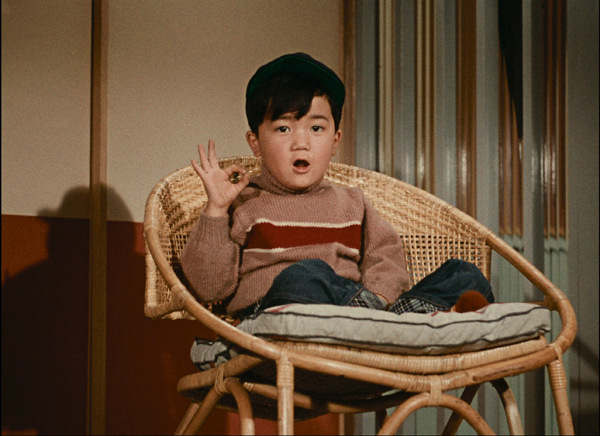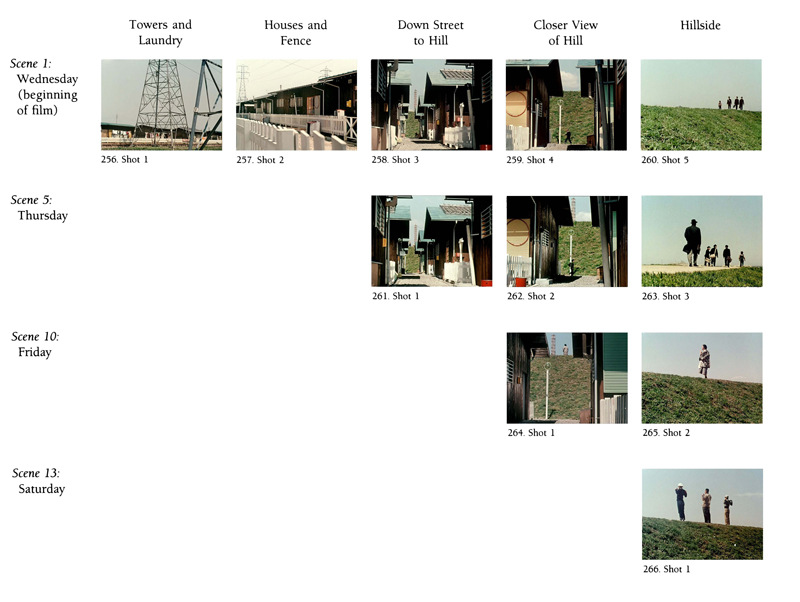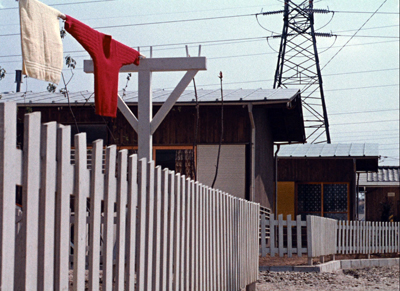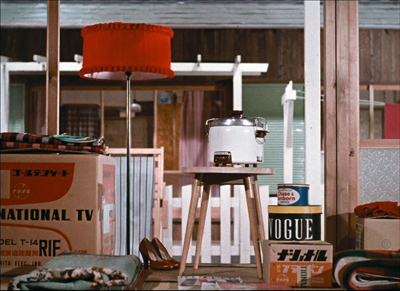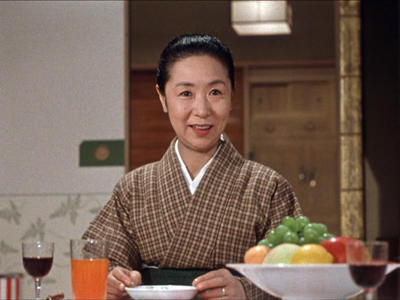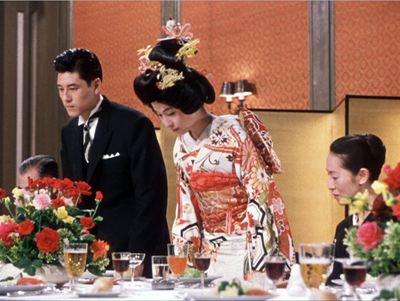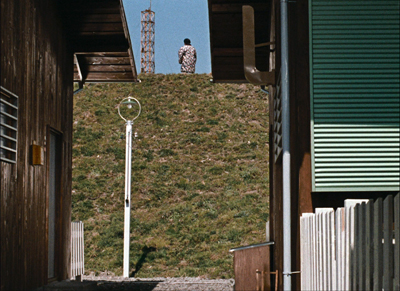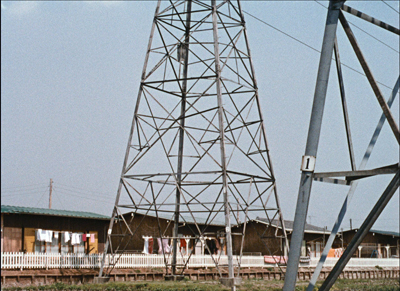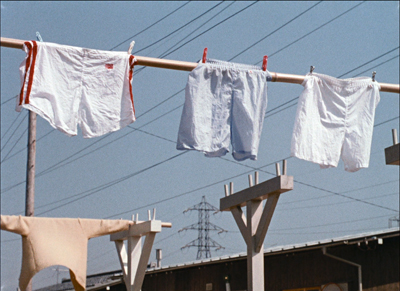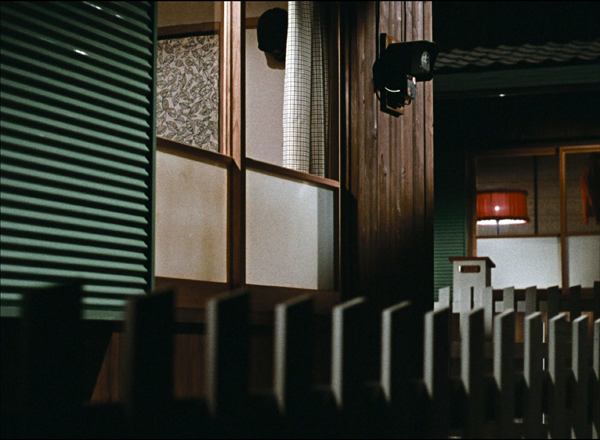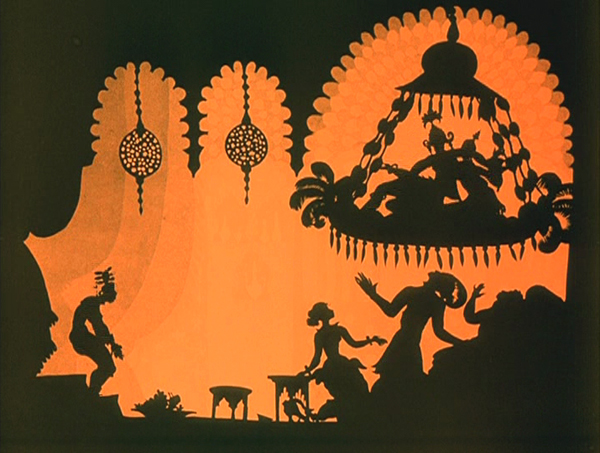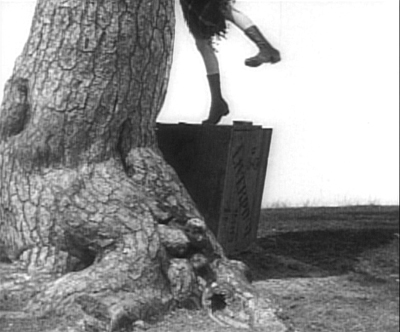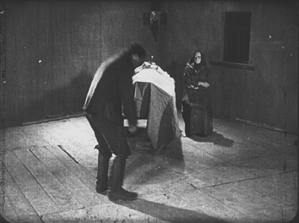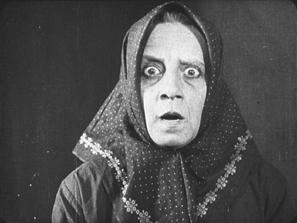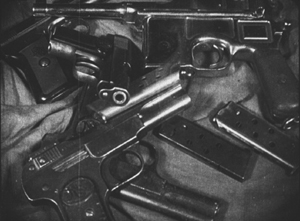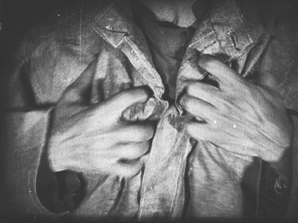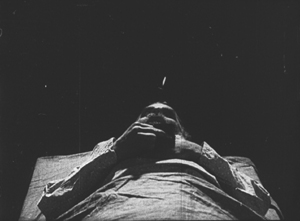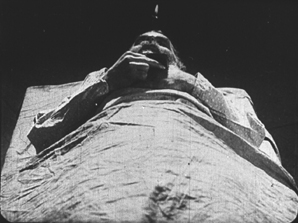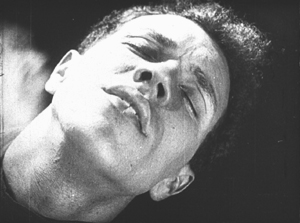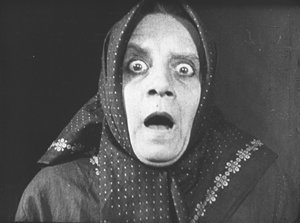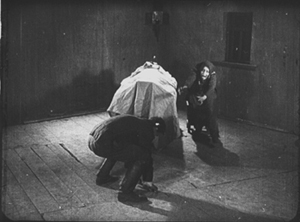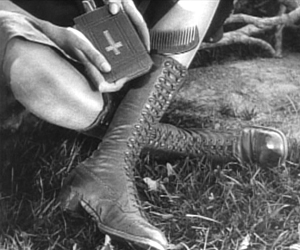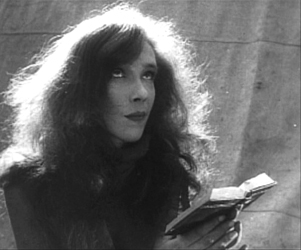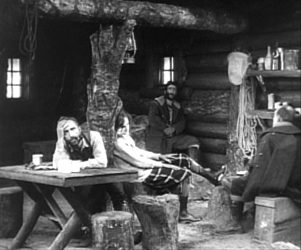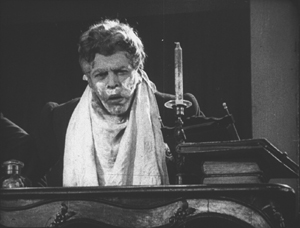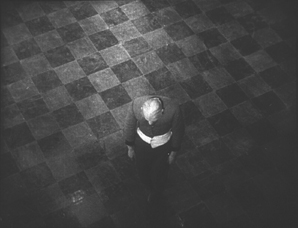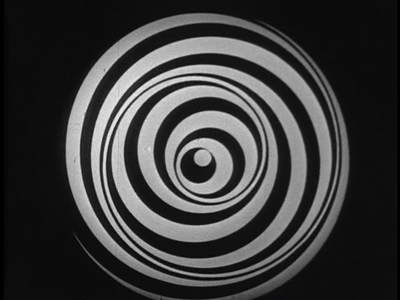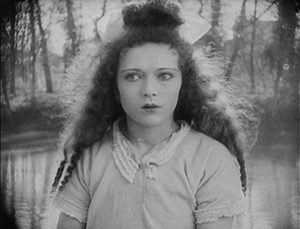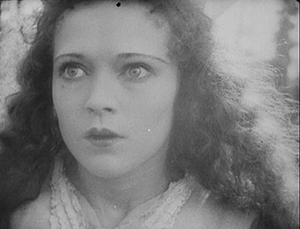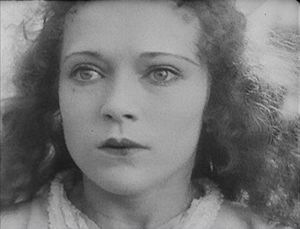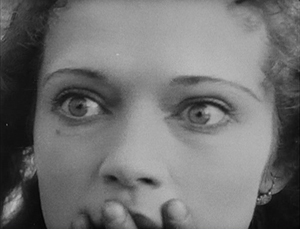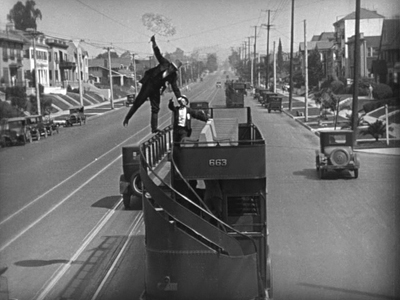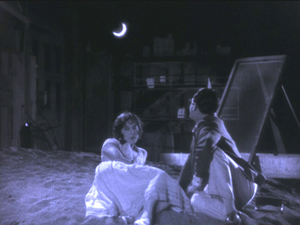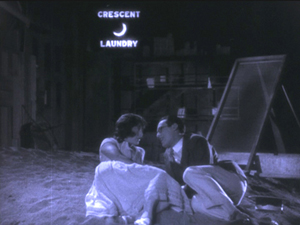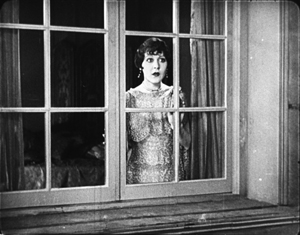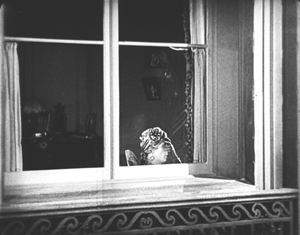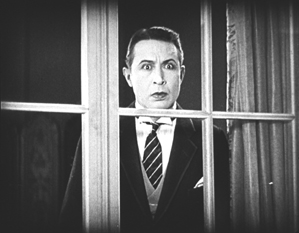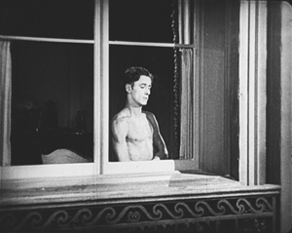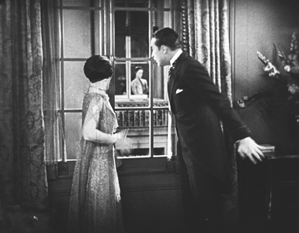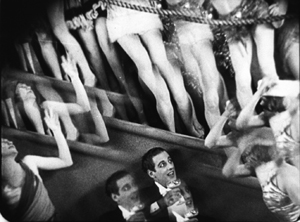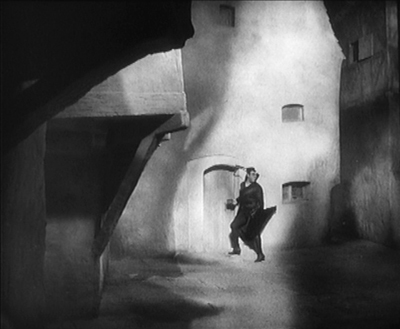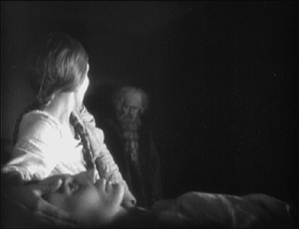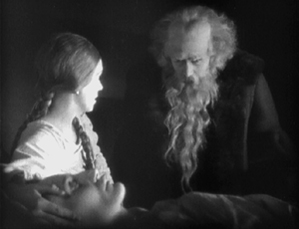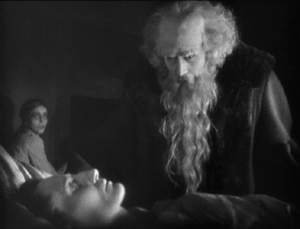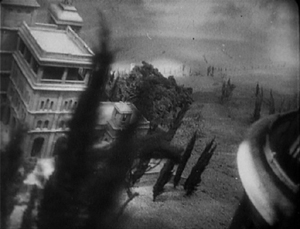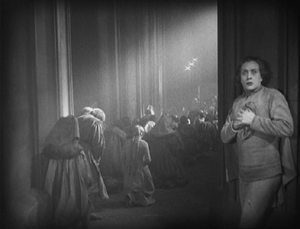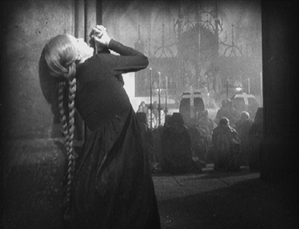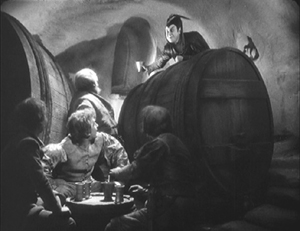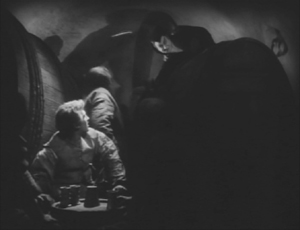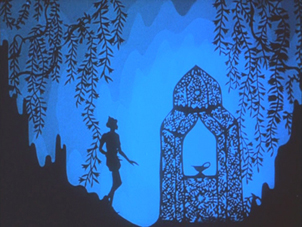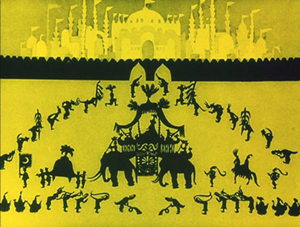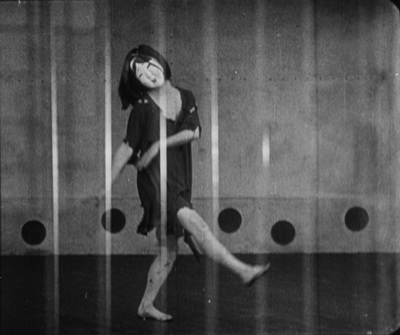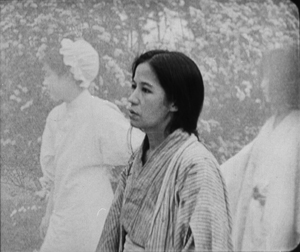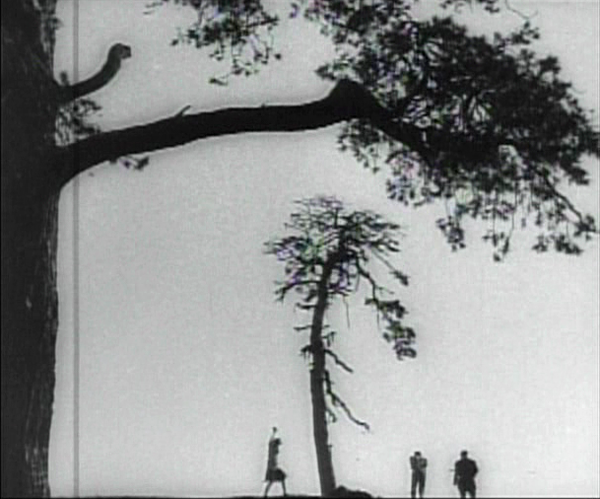Archive for the 'National cinemas: Japan' Category
Venice 2017: Crimes, no misdemeanors
Outrage Coda (2017).
DB here:
The period from 1985-1995 was a sterling era for world cinema. Whatever you think of Hollywood of that time (it wasn’t as bad as they say), American independent film was flourishing then. On the global stage, things were even better, as witness the rising careers of Hou Hsiao-hsien, Edward Yang Dechang, Jackie Chan, Tsui Hark, Abbas Kiarostami, and Wong Kar-wai. It was exhilarating to watch these and other directors turn out splendid work like City of Sadness, A Brighter Summer Day, Police Story, Project A Part II, Peking Opera Blues, Once Upon a Time in China, The Blade, Where Is the Friend’s Home?, Through the Olive Trees, Days of Being Wild, Chungking Express, and more.
That’s not all. In Hong Kong, John Woo was redefining the urban action film with the flamboyant, romantic A Better Tomorrow (1986), The Killer (1989), and Hard-Boiled (1992). In Japan, a standup comedian known as “Beat” Takeshi Kitano took over the helming of a crime thriller, Violent Cop (1989), and decided to continue directing, turning out not only the bored-hitman saga Sonatine (1993) but also the lyrical A Scene at the Sea (1991). Another Japanese filmmaker, Kore-eda Hirokazu, launched his career with the meditative, Hou-ish Maborosi (1995).
I loved these films, and still do. Woo and Kitano belong to an older generation (mine, actually), while Kore-eda is younger. None has gone away. All came to Venice 74 with murder on their minds.
Confessed, but to what?
The Third Murder (2017).
The Third Murder (Sandome no satsujin) is Kore-eda’s first venture into the crime genre, and he brings to it the same steady humanism we find in all his work. I’ve elsewhere recorded my uneasiness with his current visual style. Unlike the grave, long-take Maborosi, his films of the last decade or so are pictorially conventional, even academic, with their big close-ups, needlessly sidling camera moves, and other features of intensified continuity. But he continues to take narrative risks, and his almost Renoirian willingness to see many moral and psychological points of view make every film fairly gripping.
The Third Murder begins abruptly. An unseen victim is bludgeoned and the body is burned. The killer is the man we’ll come to know as Misumi. He’s captured. Like 99% of people charged with crimes in Japan, he readily confesses. His lawyers face only the question of sentencing: Should they try to get him life imprisonment rather than execution? When one attorney, Shigemori, decides to investigate more closely, he peels back layers of uncertainty about the circumstances, the victim, and the motive(s). Like many a victim in crime fiction, this businessman needed killing.
Following conventions of the investigative procedural, the plot relies on secrets, viewpoint shifts that drop hints, twists that frustrate simple understanding, and flashbacks that make us question what we thought we knew. Shooting in anamorphic widescreen, Kore-eda produces some extreme framings reminiscent of Kurosawa’s High and Low, one of the films he studied while preparing the project. Despite occasionally flashy moments, it’s a soberly told tale, emphasizing characterization and social critique. By the end, Misumi acquires a weary, radiant dignity, while entrepreneurial capitalism and the justice system are revealed as compromised. (In this respect it recalls I Just Didn’t Do It, 2007, by another 80s-90s director, Suo Masayuki.) In moving to the sordid terrain of the crime story, The Third Murder shows that Kore-eda hasn’t given up his sympathetic probing of human nature and his praise for un-grandiose self-sacrifice.
Bullets to the head and elsewhere
Manhunt (2017).
Sober and un-grandiose don’t apply to Manhunt (Zhuibu), John Woo’s return to bloody brotherhood and outsize ordnance. After prestige Hollywood efforts like Windtalkers (2002), the nationalistic costume picture Red Cliff (2008-2009), and the ensemble-disaster movie The Crossing (2014-2015), Woo is back with what he does best: showing many people firing many guns, dodging bullets (bad guys have bad aim), diving for cover in slow-motion, floating through hazes of cordite, and instantly recovering from wounds that would finish off you and me. These characters also run endlessly, hop into the path of trains, overturn vehicles, and set loose unconscionable numbers of pigeons.
1990s Hong Kong directors could make cheap pictures look expensive; given bigger budgets, they made expensive pictures look cheap. Here that cheapness shows most in some video-generated shots that recall the bad old days of edge enhancement. But who has time to study such problems when you’re smacked by a fusillade of 3000-plus shots in 105 minutes? Resistance is futile, and the pace doesn’t relent. When the fights and pursuits pause, the dialogue scenes flash by in a flurry of cuts and unfortunate lapses into English. (Much of the soundtrack recalls the eerily dubbed voices on US videos of The Killer.)
You’ve got no time to worry much about all this after an opening that drops us straight into an ambush. Ultra-cool Du Qiu drifts into a bar and quotes yakuza movies before leaving the hostesses to slaughter the gangsters dining there. It does get your attention, and it encourages you to sit through the exposition showing Du as the trusted lawyer for a corrupt pharmaceutical company. He proceeds to be framed for murder and goes on the run. Meanwhile stalwart detective Yamura, charged with bringing Du in, begins to suspect that there’s a bigger scheme afoot. Of course he is right.
This is all completely preposterous and continually enjoyable, with constantly startling action choreography and an overheated soundtrack that at one point breaks into Turandot. Here those damn pigeons don’t just soar into the sky; thanks to CGI, they flap annoyingly into the middle of fight scenes, spoiling a punch or a gunman’s aim. We have, besides our twinned heroes, one corrupt cop, one psychopathic son, one fairly mad scientist, two expert hitwomen (one played by Woo’s daughter), a fleet of black-suited motorcycle assassins, and two docile women who acquire some non-negligible lethality. In the press conference, Woo emphasized his eagerness to create women warriors, and he hasn’t stinted. There are hallucinatory images of a bloody wedding dress to enhance the feminine mystique.
Manhunt is a kind of palimpsest of Asian action movies. It’s a remake of a 1978 Takakura Ken movie released to great popularity in China during the 1980s. Woo, in Hong Kong, had already succumbed to that actor’s spell. What Alain Delon was to The Killer, Takakura is to this, and the steelly self-possession of Zhang Hanyu gives the film a solemnity amid all the flamboyance.
Woo has turned the Japanese original into a real Hong Kong movie, vintage 1992. It lacks the mournful homoeroticism of his prime-period work; these two men don’t gaze moistly at each other, but fire quips and complaints in the Lethal Weapon manner. (The bonding is strongest between the duo of female killers.) Still, it’s very welcome, with its proudly retro air and fanboy in-jokes. It earns the right to begin with a reference to a Japanese classic and conclude with a wink to A Better Tomorrow, as if that movie were the next link in a grand tradition. “Old movies always end this way,” says one of the survivors of the carnage. I wish more new movies did the same.
Hitmen in cars getting shot
Outrage Coda (2017).
Compared to Woo, Kitano is brutally laconic. In Outrage Coda, except for one Wooish slow-mo massacre, violence is brusque, shocking, and over fast. In a film full of bland pans following yakuza cars here and there, the end of one panning movement bursts into shooting before you realize it’s happening, and it ends just as suddenly. Kitano likes his confrontations, for sure, and sometimes there’s a buildup, but mostly the blood just erupts, punctuating long scenes of gangster intrigue.
Here that intrigue involves three rival gangs, each with bosses capable of remarkable lip contortions: the Hanabishi yakuza family, its once-powerful subsidiary the Sanno group, and a gang of fixers operating in Japan and Korea under the auspices of boss Chang. Add in two cops, one ready to knuckle to corrupt superiors, the other raging against them, and you have the world through which Otomo (Kitano) and his sidekick Ichikawa move. Normal life, as it’s commonly known, has no place here.
The action bristles with schemes, shifting alliances, double-crosses, faked deaths, and power grabs.”Your methods,” remarks one boss to a co-conspirator, “are increasingly more intricate.” Remarkably, after an introduction humiliating the not-so-bright Hanaba during a sexcapade, Otomo isn’t seen that much. Two-thirds of the running time are devoted to the machinations of the gangs and the cops. Otomo and Ichikawa swing into action rather late, their task being to chop through the knots of plot and counterplot.
The opening few minutes spread out the key motifs. A fishing scene displaying Kitano’s characteristic love for boyish pastimes is interrupted by the discovery of a pistol. The credits sequence announces the importance of cars with gorgeous shots of Otomo being driven through neon-lit streets, his ride seen from straight down as lights play over it. Throughout, deals are struck or broken in cars, and one memorable execution makes creative use of a Toyota. Even that banal filler, shots of cars pulling up and disgorging their riders, gets played for variations: distant thunder when bosses arrive for a conference, abstract configurations when rival forces meet on a rooftop.
During the 1990s Kitano was one of those directors working with what I’ve called planimetric staging and compass-point editing. (Wes Anderson, Terence Davies, and others worked the same territory.) Characters face the camera in medium shot, and shots change along the lens axis or at 90 degrees to it. It’s as if we were in between the characters. When I asked Kitano about the technique back then, he claimed that it was his effort at realism, capturing how people faced one another in conversation. He added that he didn’t know how to direct a scene, and this was the easiest way.
I thought that his images’ paper-doll simplicity suggested a naivete suited to Kitano’s childish hitmen. Moreover, this rigorous, geometrical technique takes on special impact when presenting mobster shootouts. Instead of ducking for cover as Woo’s heroes do, Kitano’s stand up and keep blasting, firing straight out at the viewer in tit-for-tate exchanges. His unflinching framing, refusing Woo’s camera arabesques, gives these encounters a ceremonial gravity, turning them into rituals of professional righteousness. Last man standing, indeed.
The face-to-face shootouts in Outrage Coda adhere to this style, and early in the film so do the conversations. Here is Otomo discovering Hanada in his masochistic rig.
But for many dialogue scenes Kitano has gone with more orthodox staging and shooting. We get over-the-shoulder shots for conversation, tight close-ups to emphasize character reactions, and even that commonplace of modern cinematography, the arcing movement around a speaker to pick up a listener in the background. These choices allow Kitano to expose the ripe performances of the two conspiratorial dons Nishino (Nishida Toshiyuki) and Nakata (Shiomi Sansei); their leathery skin, slip-sliding jaws, and shouted outbursts gain a lot from this treatment. Not that I’m really complaining. In a slightly longer film than Manhunt, Kitano gives us around 700 shots, less than a quarter of Woo’s outlay. Each image carries a lot of weight.
Outrage Coda concludes a trilogy, and at the press conference Kitano said that he conceived this and Outrage Beyond (2012) as one continuous phase of the story. He wanted the series to finish. The ending of this installment will fuel much speculation about his next move, and he hinted that he might adapt a forthcoming novel, one that’s a love story. He’s done one before in A Scene at the Sea, and arguably in Kikujiro (1999). His fans, who mobbed him at the panel, are certainly ready for whatever he comes up with.
Thanks as ever to all those at the Venice Film Festival who made our stay so enjoyable. Special thanks to Peter Cowie, Alberto Barbera, Michela Nazzarin, Jasna Zoranovich, and our colleagues at the Biennale College Cinema endeavor.
For more on John Woo’s style of action cinema, see my book Planet Hong Kong. I discuss planimetric staging and compass-point editing in On the History of Film Style and several blog entries, notably the persistently popular Shot-consciousness (which has side notes on Kitano) as well as entries on Wes Anderson.
John Woo and Kitano Takeshi satisfy their fans.
Ritrovato 2017: Many faces, many places
Agnès Varda and JR, Il Cinema Ritrovato, 1 July. Photo: DB.
DB here:
This final post from Il Cinema Ritrovato is no less a miscellany than the others. With over 500 films screened, Kristin and I invariably missed things that others raved about. Still, we saw enough powerful cinema to make us want to flag some key items for you.
Silents, please
Kristin has already mentioned one of the most startling items we saw, Le Coupable (1917) by André Antoine. I’m still processing the audacity of this film. The prosecutor in a murder trial abruptly claims the defendant as his son. We then get the familiar flashback format, shifting from the courtroom to the events leading up to the crime and the arrest. But the shifts between present and past are so quick, and the bits we see of the trial are given in such intense, stark singles, that they gain an astonishingly modern pulse.
Add in marvelous use of locations, real alleys and corridors and cafes, and you have a very impressive movie.
Once more, 1917 proves to be dynamite.
From the same year came Furcht (Fear), by Robert Wiene. Count Grevin wanders anxiously through his castle for about sixteen minutes of screen time before we realize, thanks to a flashback, that he’s haunted by his theft of a precious Indian statue, stolen from a temple. Soon a priest materializes, either on the castle grounds or in Grevin’s imagination, to declare that he has only seven years to enjoy life before vengeance strikes. Which it does, of course. Conrad Veidt plays the priest with the smoldering glare, and ambitious superimpositions show how committed German cinema was to special effects. Dr. Caligari was three years off.
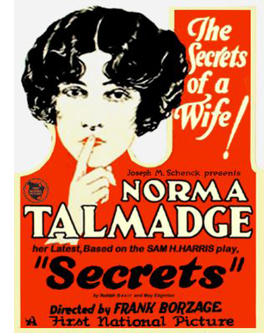 Not that other years should be slighted. Le Collier de la danseuse (The Dancer’s Necklace, 1912) was an agreeably preposterous crime movie. (The thief has a jacket with fake hands dangling from the sleeves, just the thing for escaping handcuffs.) The film boasted the low, almost Ozuesque, camera height typical of other Pathé productions of the year.
Not that other years should be slighted. Le Collier de la danseuse (The Dancer’s Necklace, 1912) was an agreeably preposterous crime movie. (The thief has a jacket with fake hands dangling from the sleeves, just the thing for escaping handcuffs.) The film boasted the low, almost Ozuesque, camera height typical of other Pathé productions of the year.
Borzage’s Secrets (1924) traces a marriage through three large flashbacks, with the first emphasizing romantic comedy, the second suspense, and the third family melodrama. Norma Talmadge, who savored a split-personality role in De Luxe Annie (1918), gets to play a woman at three ages here. The central section, devoted to a Griffithian siege on a lonely frontier cabin, showed Borzage’s ability to whip up enormous excitement, with an unexpectedly sad twist. The whole movie has over 11oo shots, indicating just how committed American filmmakers had become to fine-grained scene breakdowns.
All in all, the silent films on display this year were as revelatory as ever.
Cinematic geometries
The Abe Clan (1938).
For some years Ritrovato has included a Japanese sidebar curated by Alexander Jacoby and Johan Nordström. This year the theme was socially critical jidai-geki, or historical films. Some of them were fairly familiar to Western cinephiles because copies were circulated by the Japan Film Library Council from the 1970s onward. Examples include The Abe Clan (1938) and Fallen Blossoms (1938), both very good films. Along with these, the Bologna series gave the Yamanaka Sadao classic Humanity and Paper Balloons (1937) another well-deserved airing.
Some of these are fairly intimate dramas, others use a lot of spectacle. The image from Abe Clan above is fairly typical of the monumental turn some jidai-geki took in the late 1930s. Several of the films starred members of the left-wing Zenshinza kabuki troupe, perhaps best known to aficionados from Mizoguchi’s staggering Genroku Chushingura (1941-1942).
Three of the other films showed the range of this genre during Japan’s “dark valley,” its turn to authoritarian rule and imperial warfare. The Rise of Bandits (1937), by Takizawa Eisuke, was a rousing but melancholy Robin Hood tale. A lord’s honest son tries to save a shipment of gold from marauders, but he’s framed by his duplicitous brother. So he becomes the outlaws’ leader, at the cost of his wife’s life and his father’s trust. Some superb action sequences, including a fiery final assault on the castle, alternate with semicomic scenes among the bandits, with the hero’s cynical sidekick twisting not-too-bright thugs around his finger.
Hagiwara Ryo’s The Night Before (1939, production still above) was based on a Yamanaka script, and like Humanity and Paper Balloons, it braids together several characters’ fates. As rival samurai factions struggle during the Meiji restoration, ordinary people–an artist, a family running an inn, a young man wanting to make his name as a warrior, a bitter and disenchanted samurai–try to get by. One of the innkeeper’s daughters is attracted to the youth, another daughter who works as a geisha eyes the artist, and the old man seems to escape into endless games of shogi with a neighbor. The film has a panic-stricken climax, in which the factions collide in darkness along the riverside and innocents get swept up in the violence. As with many films in the series, the critique of mindless militarism isn’t far below the surface.
The Man Who Disappeared Yesterday (1941), by the great Masahiro Makino, is a murder mystery. An unpleasant landlord is the victim, and there are plenty of suspects. The scattered clues didn’t seem to me to play entirely fair, but the investigation is largely a pretext to explore adjacent households and obfuscate what turns out to be complicated post-murder maneuvers. At the climax, all the suspects are seated in a single line to hear the magistrate’s solution, just as if they were in Nero Wolfe’s office.
Makino’s style accentuates the spatial layout through a remarkable ten zoom-ins that yank us to one or another suspect as the explanation is given, sometimes with flashbacks. Camera zooms (as opposed to optical-printer ones, as in Citizen Kane) are rare in any national cinema of this period, and Makino uses them almost in the spirit of Hong Sangsoo, more to perk up our attention than to enlarge anything for closer scrutiny. (Admittedly, the last one rivets us on the guilty party.) The same geometrical impulse encloses the tale: an opening crane shot down, a closing one upward. As often in Japanese cinema, The Man Who Disappeared Yesterday marks and repeats film techniques to give a decorative flourish to the story.
Technique also comes to the fore, of course, in Divine (1935), a French production directed by Max Ophüls. The attraction isn’t just the dizzying camera movements, swimming through a tangle of backstage paraphernalia and crawling up stairways. Max is more than a master of the tracking shot. In one witty passage, framing and cutting coordinate to stretch the distance between a couple who can’t tear themselves away from each other. (In my last frame, the milkman’s head slides almost out of frame.)
The plot centers on a country girl who becomes a follies performer and is framed as a drug dealer by a Lothario and a lesbian. This contraption seems more or less a pretext for Ophüls to indulge his endless fascination with women striking poses for men while asserting their own demands. The abrupt and unexplained happy ending is the logical wrapup for a film less concerned with a plausible plot than a display of Woman in all her dazzling divinity. There. How’s that for a Sarris sentence?
Bigger than life
Although there were some repeats on Sunday, the final big event of the festival was the screening, to some 3000 people on the Piazza Maggiore, of the new film by Agnès Varda and JR. Kelley Conway reviewed its Cannes premiere for us earlier, and now that we’ve seen it, we like it a lot.
Varda has the ability to take a whimsical, borderline-cutesy idea and turn it into something poignant, as in Daguerreotypes and Opéra-mouffe. (Nursery-rhyming titles, like Mur Murs and Sans toit ni loi, encapsulate her attitude.) Her latest, an associational documentary along the lines of The Gleaners and I, depends on the premise of traveling through France and making enormous photographic portraits of ordinary people. These are then mounted on buildings in their home town–hence the title Visages Villages.
The result is both intimate and monumental. A postal clerk or a woman truck driver take on the billboard proportions of politicians and pop stars. Without any sense of slumming, Varda and JR can memorialize a woman living in a building about to be demolished, and can spare time for a haggard hermit who has dropped out of the system. It’s as powerful a populism as any you’ll see, but done with humor, genuine curiosity, and respect for the integrity of each subject. A playful approach to art can yield serious emotional effect.
As Visages Villages goes on, it turns introspective. Varda recalls episodes from her life and tries to incorporate one of her photos, a casual shot of Guy Bourdin, into a skewed tipsy WWII bunker rusting on a beach. She recalls young days with Godard and Karina, so that now when Godard dodges a meeting, she becomes rueful (“The rat!”). This lady gleaner is always gathering fragments, and we’re lucky she shares them with us.
Again Bologna gave excellent, overwhelming value. The surprises never stopped. Dropping into a film I hadn’t seen in three decades, Rancho Notorious, I not only had fun but realized once more Lang’s diabolical genius. A peculiar insert of a boot slipped into a stirrup puzzled me, but after an hour I got it. (Forgive me, Fritzie, for I knew not what I did.) Long may this festival flourish.
Thanks as ever to the vast and dedicated staff of Il Cinema Ritrovato, particularly Guy Borlée, Gian Luca Farinelli, and Mariann Lewinsky.
I discuss the trend toward monumental jidai-geki in chapters 12 and 15 of Poetics of Cinema. More detailed analysis can be found in Darrell William Davis’s book Picturing Japaneseness: Monumental Style, National Identity, Japanese Cinema.
Visages Villages (aka Faces, Places) is distributed by the Cohen Media Group.
Agnés Varda and JR. Photo: DB.
Good morning from Ozuland
Ohayo (Good Morning, 1959).
DB here:
Ohayo (Good Morning, 1959) was the first Ozu film Criterion released on DVD, back in 2000. The DVD format, launched in 1997, really took off only after The Matrix disc was released in September 1999. So it’s not surprising to find the Ohayo edition quite sparse. No extras, no booklet, just a brief appreciation by Rick Prelinger (which can be read here). One note is charming: “To switch between the menus and the movie, use the menu key on your remote. Use the arrow keys to cycle through menu selections. Press enter/select to activate the selection.”
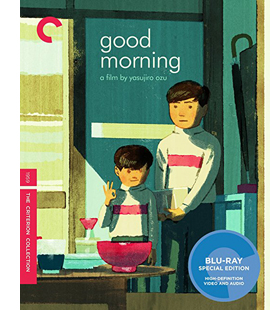 That early edition wasn’t bad, but now Criterion has given us a brand-new one. It’s derived from a 4K digital restoration and looks like a million bucks. Included with it is a pristine edition of I Was Born, But… (1932), Ozu’s first indisputable masterpiece (though I’d put Tokyo Chorus of 1931 very close), and what scraps remain of A Straightforward Boy (1929). So we have three of Ozu’s kid movies in one neat package, available in standard DVD or Blu-Ray.
That early edition wasn’t bad, but now Criterion has given us a brand-new one. It’s derived from a 4K digital restoration and looks like a million bucks. Included with it is a pristine edition of I Was Born, But… (1932), Ozu’s first indisputable masterpiece (though I’d put Tokyo Chorus of 1931 very close), and what scraps remain of A Straightforward Boy (1929). So we have three of Ozu’s kid movies in one neat package, available in standard DVD or Blu-Ray.
The disc includes a shrewd and funny video essay by Shadowplay‘s David Cairns about Ozu’s humor. I’m there too, in an illustrated interview called “Ozuland.” The title derives from my suggestion that like Bresson, Tati, Mizoguchi, and a few other ambitious directors, Ozu created his own distinct artistic realm. That realm touches recognizable real life at many points, but it has been purified–maybe decanted would be a better word–by means of cinematic form and style.
My enjoyable talk with Elizabeth Pauker ranged on a lot of topics across two hours. We talked about the film’s themes, chiefly the role of language in easing day-to-day human interaction. We discussed Ozu’s distinctive camera positions (yes, there are more than one), his compass-point cutting (360-degree space, 180-degree reverse shots), and his use of adjacent spaces and rhyming compositions. We talked about his narrative strategies too, particularly his oscillation between nuclear-family plots like I Was Born, But… and extended-family ones like Brothers and Sisters of the Toda Family (1941, another masterpiece) and Tokyo Story (1953, ditto).
I emphasized both the film’s humor and its status as an unexpectedly experimental work; Ozu was setting himself new problems. How do you treat a neighborhood as an extended family? How do you shoot families living jammed together? How do you accentuate comic misunderstandings, and create gags through composition and color?
And how do you structure a film around a landscape, days of the week, and neighborhood routines? Ozu’s answer: Through echoic camera positions and compositions. Here’s an anatomy, showing the first four days’ scene openings.
Not all of our conversation could be included in the final cut, of course. For more on these and other matters, you can download my book Ozu and the Poetics of Cinema. (The pattern shown above completes itself on p. 353.)
The title of that book resonates in a couple of ways. Most obviously it’s meant to show that a systematic approach to form, style, and theme (the stuff of a poetics of any artform) can illuminate what Ozu’s up to. The title also has personal meaning, because it was Ozu who taught me just how deeply cinematic patterning could penetrate the texture of a movie. Without sacrificing any emotional power, Ozu created films that are marvels of organization, from large-scale story construction to the smallest detail of image and sound.
I remember distinctly when I realized the grain of this work. One night back in the mid-’70s, Kristin, Ed Branigan, and I were watching Ohayo for the first time, on a 16mm New Yorker print. We came to a simple transitional passage and we all gasped. I dove back to the projector and ran the cut backward and forward again.
Apart from shifting us to a new space, as required by the plot, and apart from giving us two exquisite compositions, Ozu added a grace note: the red accent that appears in the same area of the two shots, linking shirt and lampshade. This discovery led Kristin and me to formulate the idea of the “graphic match,” a term for what happens when patterns of line or mass or color coincide from shot to shot.
Some directors, from Lubitsch to Brakhage, had employed graphic matches. Eisenstein had formulated the idea theoretically. But Ozu gave us a demo en passant, in the course of just “following his story.” His match isn’t necessary for the action, but like a rhyme in a narrative poem or a decorative trill in an operatic aria, it adds a sparkle to the moment.
By rewarding minute attention, Ozu made me realize that even ordinary movies teem with pictorial possibilities. There’s potentially so much going on within any shot or cut that scrutiny is often worth your time. True, studying Ozu makes most filmmakers look wasteful. They miss opportunities to enrich all the dimensions of cinema they present, to load every rift with ore.
But if we want to know how films work and work on us, we need to make the effort of looking closely. You’ll almost always find something interesting. When I consulted several books on 1910s directors like DeMille and Taylor, I found that nobody talked about things that popped out at me. As Yogi Berra said, “You can observe a lot by watching.”
Just how cunning was this guy? The more I looked, the more I began to hallucinate that he had made his movies just for me. When he returned to a scene’s master shot, I found that he had cunningly shifted the framing a little, or rearranged tiny elements of the set (often a beer bottle). He must have known I’d take frame enlargements (in that analog age) to check one image against another. I’d notice that in what seemed a perfectly orthodox reverse-angle sequence, things in the background had been slightly shifted to create a variant composition. That red lamp in Ohayo appears teasingly in the distance, out of focus, when other things are going on. Then you have the fact that people in these films like to keep their drinks at the same level of fill, no matter how big the glasses are or how close they are to the camera. Color seems to have inspired him to try these tricks, as in his first color film Equinox Flower (1958):
As with the shirt and the lampshade, there seemed to be Easter Eggs designed not just for my “critical method” but for me, the obsessive analyst. Why? Why would a grown man put these in his movies?
For fun. This tendency isn’t the punishing pursuit of structure at all costs we find in, say, Peter Greenaway. It’s the realization that you can play with patterning cinematic techniques, using them to accessorize your plot, the way musical motifs deepen the dialogue of an opera. And so what if nobody much notices? As I tell my skeptical students: If you thought of it, you’d do it too, just to get away with it.
Ohayo has another of my favorite examples. Throughout the film, the power lines near the neighborhood become a pictorial motif. At one point, the elderly Mrs.Haraguchi seems to be praying to a tower in the distance.
The film starts with a long shot of the neighborhood, its rooftops and fence and washlines in the distance, all dominated by a tower. The film ends with a shot of wash on a line, paying off the gag of the boy who constantly shits his underwear. But the angle of the shot constitutes a reverse angle of the very first shot, since the towers are now in the distance.
Given Ozu’s penchant for 180-degree shifts, and the rigorous patterning of his transitional spaces in the film, I stubbornly, maybe foolishly, maintain that he found this a neat way to give spatial closure to his movie, independent of the underpants gag in the foreground.
Ozu provided me bonus materials in his movies. Some are perhaps visible only to someone as persnickety as he was. And maybe they don’t matter. Ozu gives us so much to enjoy that to ask for more would be churlish. Yet he gives us that more without our asking. His films are generous to their characters and to us, but also to the art of cinema. His absurdly “restricted” approach opened onto vistas of possibility that promise more enjoyment than we have a right to expect.
He had an engineer’s mind, a painter’s eye, and a novelist’s human empathy. And he accomplished it all within one of the most flagrantly capitalistic film industries, which populated Ozuland with stars and stories. Taken all in all, I bet he’s the greatest filmmaker who ever lived.
Thanks to Elizabeth Pauker, who produced “Ozuland,” and as ever Peter Becker and Kim Hendrickson. They have done themselves and Criterion proud with this wonderful package.
The fussbudget in me can’t resist correcting something that comes up in the promotional materials and in some reviews. Ohayo wasn’t filmed in Technicolor. Ozu used what was called “Agfa-Shochikucolor.” I believe that’s just Agfa film with Shochiku adding its brand name, the way “Metrocolor” was MGM’s Eastmancolor. Why Agfa? Ozu explains: “Red turns out magnificently on Agfa film.”
I supplied a feature-length commentary for another Criterion trip to Ozuland, An Autumn Afternoon (1962). If you decide to download Ozu and the Poetics of Cinema, be patient. It’s a big file. Lots of pictures.
Ohayo (Good Morning).
P.S. 30 May: An extract from my interview, focusing of course on farts, is on Criterion’s YouTube channel.
The ten best films of … 1926
The Adventures of Prince Achmed.
Kristin (with some help from David) here:
David and I have been offering this greatest-of-90-years-ago series almost as long as this blog has existed. For earlier annual entries, see 1917, 1918, 1919, 1920, 1921, 1922, 1923, 1924, and 1925.
I approached 1926 with the assumption that it would present a crowded field of masterpieces; surely it would be difficult to choose ten best films. Instead it turned out that some of the greatest directors of the era somehow managed to skip this year or turn in lesser films. Eisenstein had two masterpieces in 1925 but no film in 1926. Dreyer made a film that is a candidate for his least interesting silent feature, The Bride of Gromdal. Chaplin did not release a film, and Keaton’s Battling Butler, while a charming comedy, is not a plausible ten-best entry. The production of Lang’s Metropolis went over schedule, and it will appear on next year’s list, for certain.
Still, the Soviet directors were going full-tilt by this time and contribute three of the ten films on this year’s list. French directors on the margins of filmmaking created two avant-garde masterpieces. Two comic geniuses of Hollywood already represented on past lists made wonderful films in 1926. A female German animator made her most famous work early in a long career. I was pleased to reevaluate a German classic thanks to a sparkling new print. Finally, Japan figures for the first time on our year-end list, thanks to a daring experimental work that still has the power to dazzle.
The Russians are coming
Vsevolod Pudovkin’s Mother was a full-fledged contribution to the new Montage movement in the Soviet Union. By the 1930s, that movement would be criticized for being too “formalist,” too complex and obscure for peasants and workers to understand. Nevertheless, being based upon a revered 1906 novel of the same name by Maksim Gorky, Mother was among the most officially lauded of all Montage films. It tells the story of a young man who is gradually drawn into the Russian revolutionary movement of 1905. His mother, the protagonist of the novel, initially resists his participation but eventually herself joins the rebellion.
Along with Potemkin, Mother was one of the key founding films of the Montage movement. Its daring style is no less impressive now than it must have been at the time. One brief scene demonstrates why. Fifteen years before Mother, D. W. Griffith was experimenting in films like Enoch Arden (1911) with cutting between two characters widely separated in space, hinting that they were thinking of each other. By 1926, Pudovkin could suggest thoughts through editing that challenged the viewer with a flurry of quick mental impressions.
As the Mother sits beside her husband’s dead body, her son, a participant in the 1905 failed revolution, comes in. He is about to bend down and open a trap-door in the floor (73 frames). A cut-in shows her horrified reaction (12 frames), and there follows a brief close shot of some guns she had seen him hide under the floor in an earlier scene (11 frames). Even shorter views of a man clutching his chest (8 frames), two jump-cut views of the dead husband (3 frames and 2 frames), and a tight framing of the son being shot follow (8 frames). We return to her face, registering even greater horror (15 frames). A return to the initial long shot shows her leaping up to try and stop her son from taking the guns out to participate in a seditious act (31 frames).
The series of five shots goes by in a few seconds, and we are challenged to grasp that the guns are a real memory, while the shots of the man’s chest and her son’s anguished face are visions of what might happen. The shots of her husband’s body suggest that she could soon end up sitting by her son’s corpse as well. The jumble of recollection, imagination, and reality are remarkably bold for this relatively early era.
Mother also contains two of Pudovkin’s most memorable scenes, the breaking up of ice in the spring as a symbol of the Revolution and the final violent attack on the demonstrators, including the heroine.
Mother was released on DVD by Image Entertainment in 1999, but it seems to be very rare. An Asian disc, perhaps a pirated edition of the Image version, is sold on eBay. I’ve never seen the film on DVD and can’t opine on these. The time is ripe for a new edition.
Pudovkin was one of the filmmakers who had studied with Lev Kuleshov during the early 1920s, when Kuleshov made the famous experiments that bear his name. Pudovkin played the head of the gang of thieves in The Adventures of Mr. West in the Land of the Bolsheviks, which I included in the ten-best list of 1924.
Kuleshov had moved on as well to direct his most famous film and probably his best silent, By the Law, based on Jack London’s story “The Unexpected.” Set in the Yukon during the gold rush, it involves five people who are cooperatively working a small claim and discover gold. Taking advantage of a warm autumn, they stay too long and are trapped for the winter. One of the men kills two of the others, and the heroine, Edith and her husband Hans are left to determine the fate of the killer, Dennin. Edith insists on treating him strictly according to the law. After enduring the harsh winter and a spring flood, the couple finally act as judge, jury, witnesses, and, after finding Dennin guilty, executioners.
The great literary critic and theorist Viktor Shklovsky (one of the key figures of the Russian Formalist school) adapted the short story, condensing it by eliminating the opening section of Edith’s backstory and a few scenes in which a group of Indians appear occasionally to help the prospectors. The result is a concentration on the tense drama of a three people trapped together in a tiny cabin.
In the 1924 entry, I mentioned that Kuleshov’s team emphasized biomechanical acting and that Alexandra Kokhlova was adept at eccentric acting. She delivers a bravura performance here, as Edith moves closer to a breakdown as the months go by.
Kuleshov also puts into practice the experiments in imaginary geography that his classes had made. Although in this film he didn’t unite shots made in widely separate spaces, he did favor scenes built up of a considerable number of detail shots before finally revealing the entire space in an establishing shot. Edith, for example, though glimpsed briefly asleep early on, is introduced in a later scene by a shot of her boots and Bible, followed by a shot of her head as she read the Bible. The scene also contains close shots of the other characters before a general view of the cabin interior shows where each of them is.
The scene of the execution includes one of the most famous images of the Monage movement, a framing with the horizon line at the bottom edge of the frame and the sky dominated by trees (see bottom). Any number of framings of tall features such as trees and telephone poles against a huge sky appeared in Montage and non-Montage films, and this device became so common as to be a trait of the Soviet cinema of the late 1920s and early 1930s.
The desire to hide the actual hanging led Kuleshov to stage is behind the larger of the two trees, as Edith and Hans struggle to carry out their sentence on Dennin. This leads to some eccentric framings, such as our view only of Edith’s legs as she teeters on the box where Dennin stands, presumably adjusting the noose (see top of this section).
A beautiful print of By the Law is available on DVD from Edition-Filmmuseum.
Grigori Kozintzev and co-director Leonid Trauberg did not study with Kuleshov, but they shared a passion for eccentricity. Having started out in the theater, in 1921 both contributed to the “Manifesto for an Eccentric Theater,” a dramatic approach based on popular forms like circus and music-hall. In 1922 they founded the “Factory of the Eccentric Actor” group and two years later transformed it into FEKS, devoted to making films.
The Overcoat (also known in English as The Coat), their second feature, was based on a combination of two short stories by Gogol, an author whose grotesque creations were very much in tune with their own tastes. It tells the story of a poor, middle-aged low-level government clerk, Akaky Akakievich, who is bullied over his shabbiness, particularly his worn-out overcoat. Scrimping to buy a new one, he finally purchases a magnificent new coat and finds his status suddenly raised–until the coat is stolen.
Andrei Kostrichkin was a mere twenty-five years old when he played the fiftyish clerk, but he was highly effective and provided another model of the eccentric actor. As Akakievich he stands with bent legs and twisted torso, as if flinching away from a blow, and walks in tiny steps along perfectly straight lines through the hallways in his office building. When he applies to a Person of Consequence for help in recovering his stolen coat, the official leans over his desk to look downward, with a high-angle point-of-view framing of Akakievich appearing dwarfed by the other’s superiority.
The script of The Overcoat was adapted by another Russian Formalist critic and theorist, Yuri Tynjanov.
Unfortunately The Overcoat does not seem to be available on any form of home video.
Petit mais grand
The IMDb lists 23 directing credits for Dimitri Kirsanoff from 1923 to the year of his death, 1957. He is largely remembered, however, for one film, the 37-minute Ménilmontant, a melodrama about the travails of two sisters orphaned as children by a violent crime. Each is later seduced by a callous young man who leaves the heroine a single mother and her sister reduced to prostitution. It belongs to the French Impressionist moment. (We deal with Impressionist films in other entries: La roue, L’inhumaine, L’affiche, Coeur fidèle, The Smiling Madame Beudet, Le brasier ardent, Crainquebille, and El Dorado, as well as DVD sets of Impressionist films by the Albatros company and by director Jean Epstein.)
The story itself is simple and indeed might be thought clichéd were it not for two factors. First, there’s the performance of the delicately beautiful Nadia Sibirskaïa as the protagonist. There’s also the lyrical, melancholy use of the settings, initially in the countryside and later in the desolate working-class Parisian district whose name gives the film its title. The simplicity of the narrative also makes it one of the most successful of the attempts to tell a story visually, eschewing intertitles.
The film’s most famous scene is its abrupt, shocking opening. With no establishing shot, there is a series of rapid shots of details of faces, hands, a window, and an ax, during which we can barely discern that a man has committed a double murder. The spectator cannot possibly know who these people are and why the murders occur.
Instead of offering an explanation, the action then shifts to two little girls playing in the woods. As they return home, the camera begins to concentrate on one of them, apparently the younger, as she arrives at the murder scene and reacts in horror. Kirsanoff presents her expression in a series of five shots, linked by what David has termed axial cuts, from medium shot to extreme close-up as she gradually realizes what has happened.
There had certainly been axial cuts before this, including in Potemkin, but Kirsanoff probably went further than anyone of the era by including so many shots, by making each so short, and by moving his camera forward in such small increments. It is difficult to notice every cut, particularly the one from the third to the fourth shot, and the effect adds an unsettling quality to an already intense moment.
After this opening, a funeral scene reveals through labels on the grave that the murdered man and woman are the children’s parents. We might have suspected that the killer was a jealous husband discovering his wife with her lover. As it is, we never learn whether the crime was the result of a love triangle or the random act of a madman.
The rest of the film establishes the sisters now grown up, working in a workshop making artificial flowers and sharing a small flat in Menilmontant. The heroine’s brief romance leads to a baby, and superimpositions and other Impressionist techniques depict her despair and contemplation of suicide. Beautifully melancholy atmospheric shots of the streets of the neighborhood punctuate the action and underscore the dreariness and hopelessness that the heroine faces. The ending, though an improvement in the heroine’s lot, does little to dispel the overall grimness of the story.
Menilmontant is included in the out-of-print set “Avant-garde – Experimental cinema of the 1920s & 1930s.” It has been posted twice on YouTube in a low-rez format.
Even shorter is Anémic cinéma, the only venture into film directing by the great French Dadaist, Marcel Duchamp. It’s hard to compare a roughly seven-minute abstract film with narrative features, but this short is so innovative and influential that it’s also hard to leave it off the list.
Duchamp went through a phase of spinning artworks, including some “Rotoreliefs” that he attempted to sell as toys. These were similar to some Victorian optical toys, such as the Phenakistopscope and the bottom disks of Zoetropes. See Richard Balzer’s website for a collection of such devices, as well as “The Richard Balzer Collection” on tumblr, which contains gifs that animate some of the disks, done by Brian Duffy. Some of these resemble the spinning spirals and embedded circles that Duchamp used for his short. (See the top of this section.)
These spinning abstract circular images alternate with slowly spinning disks with sentences laid out as spirals. These involve either alliteration or puns or both. Unfortunately the English subtitles cannot render these in a way that conveys the original intent. For example, “Esquivons les ecchymoses des esquimaux aux mots exquis” becomes “Let us dodge the bruises of Eskimos in exquisite words.” The meaning is the same, and even the echo of the first syllables of “Eskimos” and “exquisite” is retained. Nevertheless, the similar syllables in two other words in the original are lost, as are the echoes of “moses,” “maux,” and “mots.” It is rather as though someone attempted to render “Peter Piper picked a peck of pickled peppers” into another language quite literally. (The Wikipedia entry includes a complete list of the sentences in French.)
Duchamp’s purpose was presumably to create an artwork with minimal means, including quasi-found objects, the disks he had made for another purpose. His idea is clearly reflected in the title, Anémic cinéma, which suggests a weakness or thinness of means. “Anémic” is also an anagram for “cinéma.”
Anémic cinéma is available in the same collection as Menilmontant, linked above. it is also available in the similarly out-of-print set, “Unseen Cinema.” There are numerous versions on YouTube, varying in quality. Some of these have been manipulated by other artists.
Lloyd and Lubitsch
Though Chaplin and Keaton might have had off-years in 1926, Harold Lloyd did not. Over the past several years, Lloyd has gradually been gaining the admiration he deserves. He used to be known largely for Safety Last (1923) and The Freshman (1925), two excellent films which, however, are not his finest. Girl Shy (1924) and The Kid Brother (1927) are better known now for the masterpieces they are. For Heaven’s Sake (directed by Sam Taylor), which clocks in at a mere 58 minutes, is just as good.
Lloyd plays a breezy millionaire, J. Harold Manners, who unintentionally helps Brother Paul found a mission in the downtown slums of Manhattan. He falls in love with Hope, the missionary’s daughter, and decides to help out around the place. By this time Lloyd was known for his spectacular chase scenes, and there are two here. Initially he puts a twist on the chase, luring a growing crowd of criminals into racing after him, ending in the mission. Gaining their respect, Harold makes the mission a happy social center.
The romance provides one of my favorite comic intertitles, leading into a love scene: “During the days that passed, just what the man with a mansion told the miss with a mission–is nobody’s business.” The love scene in turn includes a visual joke that emphasizes the rich boy – poor girl contrast.
Harold’s rich friends hear that the pair are to be married and determine to kidnap him to prevent the inappropriate match. The result is a lengthy chase through the streets of Manhattan, with the drunken thugs rescuing Harold and using a variety of means to get him back to the mission in time for the wedding–as when the drunken leader of the group demonstrates his tightrope-walking abilities on the upper railing of a double-decker bus (see above).
Two years ago, when I put Girl Shy on my list, the New Line Cinema boxed set of Lloyd films was out of print and hard to find, and the separate volumes appeared to be going out of print as well, with Volume 1 not being available at the time. The situation has changed, and the boxed set, though apparently still out of print, is now available at reasonable prices from various third-party sellers on Amazon and Barnes & Noble. The set contains a “bonus disc” with extras, including interviews and home movies. The same is true for the three individual volumes (here, here, and here). For Heaven’s Sake is in Volume 3.
Inevitably, coming directly after Lady Windermere’s Fan, probably Ernst Lubitsch’s greatest silent film, So This Is Paris does not quite live up to its predecessor. Still, it’s a very fine, clever, and funny film, and it marks Lubitsch’s last appearance in these lists until sound arrives.
The opening scene, running nearly twenty-five minutes, is as good as anything Lubitsch did in this era. Set in Paris, it’s a slow build-up of misunderstandings and deceptions involving two affluent couples in apartments across the street from each other. One couple, Maurice and Georgette Lalle, are practicing a melodramatic dance in Arabian costumes. Their marriage seems to be a rocky one. Across the street, Suzanne Giraud is reading one of the lurid “Sheik” novels that were popular at the time, involving “burning kisses” in its final scene. Put into a romantic mood by this, she looks out her window and sees the head of a man in a turban at the window opposite–Maurice relaxing after his strenuous rehearsal.
Her husband Paul arrives home, and she kisses him passionately. Apparently not used to such affectionate greetings, he is puzzled until he, too, looks out the window. By now Maurice has doffed his turban and necklaces and appears to be not only naked but also examining a piece of his anatomy.
Paul jumps to the conclusion that this sight is what caused Suzanne’s unaccustomed display of passion. He calls her to the window, and we see Maurice in depth through the two windows.
Suzanne then asks if Paul is going to stand for such a thing, and he goes to the other apartment to confront Maurice. Instead he finds Georgette, who turns out to be an ex-lover of his. She introduces him to Maurice, who is very friendly and charms Paul. The latter who returns home and claims that he has beaten Maurice and even broken his cane on him, though in fact he had simply forgotten it. Shortly thereafter Maurice visits Suzanne to return the undamaged cane and takes the occasion to flirt with her. It’s a beautifully plotted and developed farcical scene. The film is based on a French play and could easily have become stagey in its adapted form. Yet the byplay between the two apartments via the windows allows Lubitsch to avoid any such impression; the misunderstandings based on optical POV recall the racetrack scene of Lady Windermere.
The rest of the film develops the two potentially adulterous affairs, primarily with Paul secretly taking Georgette to the Artists’ Ball. Here Lubitsch uses an elaborate montage sequence to convey the wild party, with superimpositions and shots taken through prismatic lenses.
Such sequences were primarily developed in German films and were still fairly rare in American ones in 1926. Similar techniques convey Paul getting drunk on the champagne he and Georgette are awarded when they win a dance contest–the announcement of which on the radio broadcast of the ball alerts Suzanne to her husband’s presence there with another woman.
So This Is Paris is less famous than Lubitsch’s earlier American comedies primarily because it has never appeared on DVD. Marilyn Ferdinand, in a blog entry that gives a detailed description of the film, writes that Warner Bros. claims not to own the rights to the film anymore and therefore has made no effort to bring it out on home video. On the other hand, a four-minute excerpt of the dance montage sequence was included in the Unseen Cinema set (disc 3, number 18), and the credit there is “Courtesy: Warner Bros., Turner Entertainment Company.” Whatever the rights situation is, a home-video version of this film is in order. A beautiful 35mm print is owned by the Library of Congress, so there is hope.
Two German flights of fancy
I must confess that I was disappointed the first time I saw F. W. Murnau’s Faust, and I have never warmed up to it in later viewings. I am delighted at having occasion to look at it again for this 1926 list, since a recently discovered and restored print reveals that the main problem before was the poor visual quality of the print formerly in circulation.
Different local release prints survived in a number of countries, but there were basically two original versions made: the domestic negative for German release and the export negative. These were shot using two camera side-by-side on the set, as was the standard practice in much of the silent era, given the lack of an acceptable negative-duplicating stock. The primary camera contributed most of the shots to the domestic negative, though in some cases where the second camera yielded a superior take, that was used in the domestic negative. Conversely, inferior takes from the primary camera sometimes made their way into the export negative. The result, as we now know, was that both the visual quality and in many cases the editing of the scenes was markedly different in the two negatives.
The version familiar for decades originated from the export negative. Recently the domestic negative was rediscovered, and the Friedrich Wilhelm Murnau Stiftung restored the that version using the that negative, supplemented with material from a variety of other prints. The result closely approaches the original German release version, including the original decorated intertitles. The contrast in quality between this restoration and the old, familiar Faust is remarkable.
Given how dark the film is, details in the backgrounds could easily be lost. The scene in which Faust is called to help a woman dying of the plague is revealed to have dramatic staging in depth against a very dark room contrasted with the stark foreground underlighting of the woman’s haggard face. Faust enters from behind the daughter and comes forward to her, after which his movement is balanced by the daughter retreating into that same dark background.
The famous aerial journey of Mephisto and Faust from Germany to Italy (below left) always looked rather hokey, but the detail revealed in the extraordinarily extensive model makes it far more impressive. Similarly, when one can actually see the sets, visual echoes become apparent. For example, Faust first encounters Gretchen and follows her into the church, where he finds himself barred from entering by his pact with Mephisto. Later, when Gretchen has been abandoned, she laments when not permitted to enter there.
No doubt some motifs of this sort were visible in the earlier print, but their clarity here enhances both the beauty and the craft of Murnau’s film.
Faust is available in several editions on DVD and Blu-ray. DVDBeaver ran a detailed comparison among seven of these, including a selection of frame grabs. To my eye, the 2006 DVD “Masters of Cinema” version of the domestic print, released by Eureka!, looked the best. (The two-disc set also includes the export version.) The Blu-ray from the same source, released in 2014, looked slightly darker. The box for the Blu-ray also includes the DVD, however. These releases are Region 2. The film is available on Blu-ray in the USA from Kino.
Both Eureka! releases’ supplements include a booklet, a commentary track, a Tony Rayns interview, and a lengthy comparison of the domestic and export versions. One particularly striking example is drawn from the scene in which Mephisto talks with Gretchen’s brother in a beer hall, with the domestic version on the left.
While watching Faust, I kept grabbing frames, far too many to be used in this entry. They were simply too beautiful or impressive to be passed over, and they made my final selection of illustrations difficult. The only other film for which this was true this year is Lotte Reiniger’s silhouette-animated feature, The Adventures of Prince Achmed. The restored, tinted print that is currently available is even lovelier than the older black-and-white version.
Reiniger seems to have invented the use of jointed silhouette puppets, and she still is the first artist one thinks of in relation to this form of animation. She continued to practice it until the 1970s. (See the link below to a collection of many of her short films.) Her one feature film remains her most famous and is probably her masterpiece.
It involves far more than simple black figures moving against a light background. As the frame at the top of this entry shows, her characters, furnishings, and locations, all rendered in paper with scissors, were often elaborate indeed. Characters wore feathers, jewelry, fancy wigs, and other decorative elements. The hanging platform has many little tassels, and the lamps are rendered in delicate filigree. The backgrounds are not blank but have varying layers of saturation that suggest a depth effect, the equivalent of atmospheric perspective. At the left in the top image, a series of identical curtains start out a dusky orange and in three stages lighten until there is a bright, solid glow at the center.
In the frame at the left below, the same sort of shading creates the depth of a cavern, setting off the tracery of the foliage and the kiosk in which the hero finds the magic lamp. On the right, very simple shading suggests a vast and elaborate palace in the background, while Reiniger fills the foreground with many small figures, all marching out to surround the procession of the caliph.
By choosing a classical fantastic tale, Reiniger found the perfect subject matter to fit the technique that she invented. Both the subject matter and the sophistication of the animation give her films a timeless look. Her reputation remains high today as a result. One scene in Harry Potter and the Deathly Hallows Part 1, “The Tale of the Three Brothers,” was made in a style inspired by Reiniger’s work. (I discuss it here.)
A restored, tinted version of The Adventures of Princes Achmed is available from Milestone. A combination Blu-ray/DVD release of the film is available from the BFI. (I have not seen this version.) Note that these have somewhat different content. The BFI version has five Reiniger shorts from across her career along with a booklet. The Milestone version has only one of the shorts, but it includes a documentary about Reiniger. (This documentary was on the 2001 BFI release of the film on DVD but is not listed among the extras on its Blu-ray.) See also the BFI’s collection of many of her shorts, “Lotte Reiniger: The Fairy Tale Films,” which I discussed here.
[Dec 27: Thanks to Paul Taberham for pointing out that Prince Achmed also has no intertitles and gets along without them very well.]
Into the asylum
David here:
Few western viewers of 1926 saw any Japanese films, but Japanese audiences had been watching imported films for a long time. Hollywood films could easily be seen in the big cities, and The Cabinet of Dr. Caligari (released in 1922), La Roue (released in early 1926), and other films from Europe had made a strong impression on local filmmakers. One fruit of this influence was the wild Page of Madness (Kurutta ichipeiji, aka “A Crazy Page”).
Directed by Kinugasa Teinosuke and based on a story by the renowned experimental writer Kawabata Yasunari, the film bore the influence of German Expressionist and particularly French Impressionist cinema. Page of Madness set out to be a bold exercise in subjective filmmaking. But it wasn’t widely seen at the time, and wasn’t revived until 1971, when Kinugasa discovered a print in his house (reportedly, among cans of rice). Apparently the version we have is slightly edited.
A woman has been confined to a madhouse, and her husband has taken a job as a janitor there to stay in touch with her. Many of the scenes are presented as the hallucinations of the wife and other inmates, while abrupt flashbacks attached to the husband fill in the past. But this story is terribly difficult to grasp. There are no intertitles (perhaps an influence of The Last Laugh, shown in Japan earlier in 1926), and the film is a blizzard of images, choppily cut or dissolving away almost subliminally.
Viewers of the period had the advantage of a synopsis printed in the program, and there was a benshi commentator accompanying the screening to explain the action. Because we lack those aids, the film seems more cryptic than it did at the time. Even when you know the story, though, Page of Madness often surpasses its foreign counterparts in its free, unsignalled jumps from mind to mind and time to time. It remains a powerful example of narrative and stylistic experiment, from its canted framings and single-frame cutting to its frenzied camera movements and abstract planes of depth (thanks to scrims à la Foolish Wives, 1922).
For nearly fifty years it has remained a milestone, a grab-bag of advanced techniques and likely the closest Japan came to a silent avant-garde film.
Page of Madness is not commercially available on home video. It is occasionally shown on TCM, and a reasonably good print is on YouTube. Aaron Gerow’s A Page of Madness: Cinema and Modernity in 1920s Japan is an indispensable guide to Kinugasa’s eccentric masterpiece.
By the Law.












